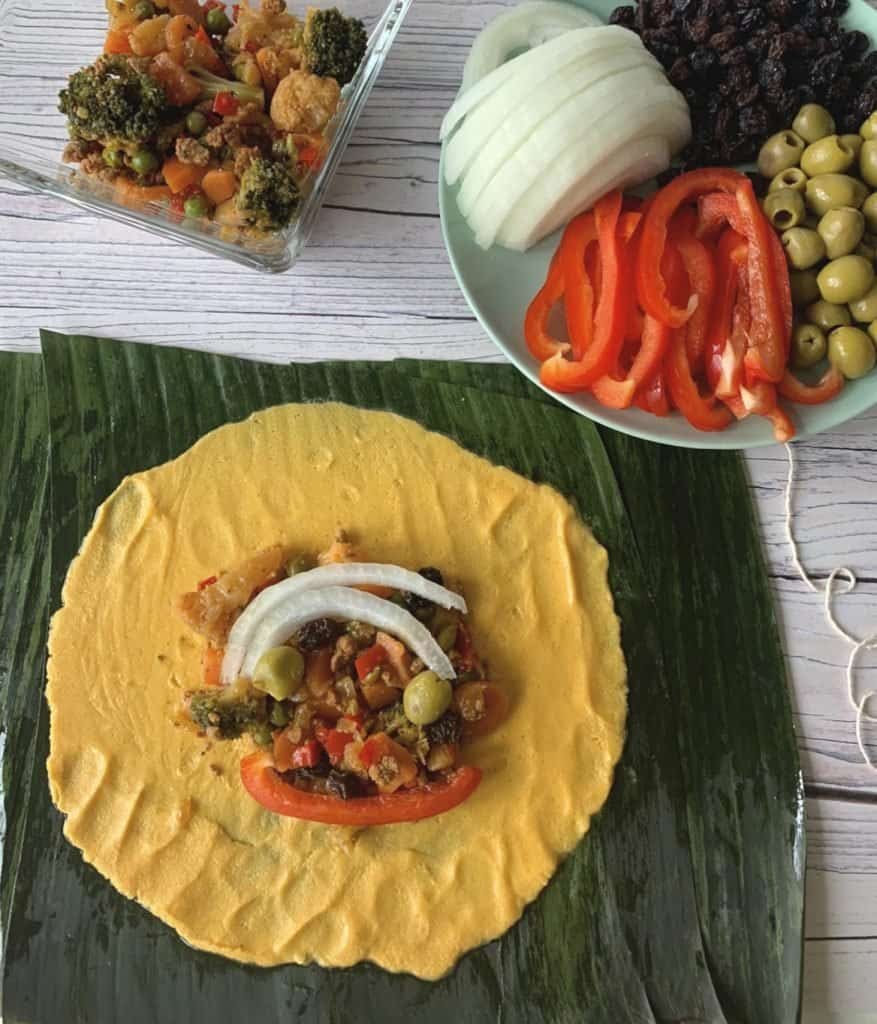The history of the Hallaca
What is an hallaca:
Hallacas are a Venezuelan Christmas dish. It is a traditional Venezuelan dish like the arepa and pabellon criollo. Hallacas are made with corn flour (such as Harina Pan Amarilla) containing a filling. This filling may vary and usually consists of a meat stew, though Hallacas Vegetarianas are an option. The way hallacas are prepared varies depending on the area of Venezuela, as it can be prepared in many different ways. The filling also includes vegetables such as peppers, onions, raisins, olives and many others. The Venezuelan hallaca is similar to the popular Mexican tamal but they are quite different in their tastes.

How hallacas are prepared:
The preparation of an hallaca firstly involves spreading Harina Pan dough on a banana leaf. Then, placing vegetable and meat filling on top. Lastly, the preparation process is finished by folding the banana leaf and tying it. The hallaca is then ready to be boiled. Hallacas have a long preparation process, so it is usually prepared by a group of people- bringing family and friends together.
How hallacas are served:
Venezuelans eat hallacas during the Christmas period, on Christmas Eve and New Year’s Eve. The hallacas are taken out of the banana leaf and are usually enjoyed with ensalada de gallina, pan de jamon and ponche crema.

The use of banana leaves:
Traditionally, natives in Venezuela used banana leaves, which is how they came to be used for hallacas. Plantain and banana leaves are used in several cultures in countries where they are plentiful. They are used for cooking dishes as well as serving them. An example of these leaves being used for serving food is South Indian Thali or during sadya. The leaves also have a religious significance in many Hindu rituals. They add a subtle aroma to dishes and are key in food preparation for hallacas.

The origin of hallacas:
Hallacas are said to have been invented by slaves during the colonial era, around the 15th and 16th century. Slaves and indigenous servants used leftovers that the colonialists didn’t eat and combined it with their corn dough and banana leaves. These combined together to make a nutritious meal. However, another theory is that the Spaniards tried to improve the Aztec tamal and this is how the hallaca emerged. The origin of the word ‘hallaca’ most likely comes from the Spanish word for there (“allá”), referring to the meat stew and fillings made with ingredients that came from abroad, and the word for here (“acá”), referring to the corn dough and banana leaf found in originally in Venezuela and other areas of South America. The word Hallaca is a combination of those two words.
One Christmas, the Caracas bishop asked the population to donate their leftovers to natives and slaves so they could fill their doughs. He also urged the population to eat the same as the slaves did, to avoid huge amounts of food being wasted. They accepted the demand, as many people at the time were religious, and thus began the tradition of eating hallacas on Christmas.

Arturo Uslar Pietri, a Venezuelan intellectual, historian and writer (among other things) explained: “Hallaca is an exemplary way of understanding the mix of cultures, because inside that cake there are raisins and olives from the Romans and Greeks, the caper and almond from the Arabs, the beef cattle from the colonizer captains from Castilla, and the corn and the banana leaves from the natives.”
